


Halfway House, where a strange man finds final rest on his tortured journey through life . . . Halfway house, where, under the grim shadow of a sensational murder, opposites meet and clash -- common peddler and financier, young housewife and cold society woman, struggling lawyer and millionaire debutante... Halfway house, where Ellery Queen, crime consultant to the world-at-large, returns to his old love of pure and pungent deduction in what is unquestionably his most fascinating narrative of real people and subtle violence. The victim had lived two lives, but a single knife thrust ended both of them. The trail of suspicion led into the guilt-edged world of the beautiful people—and climaxed in a vicious courtroom battle that ended with a shattering verdict. It seemed that for the first time Ellery had met his match—until the sleuth blended his usual impeccable logic with a most unusual fling … . |
| "An extraordinary
murder mystery solved by a paper packet of matches."
--
The New York Post. "It is a straight-out murder mystery with no fancy trimmings, in which Ellery Queen tantalizes and challenges the deductive powers of the reader with his usual fascinating method of analysis and his own attractiveness." -- Margaret Germond, The Evening Star, Washington D.C. |
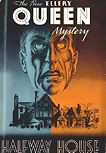 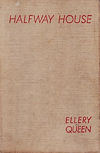 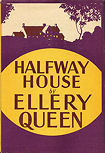    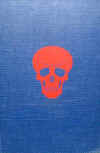 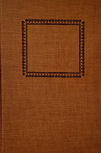 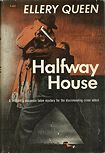  |
|
Above left to right: Both
dust cover and hard cover for Stokes and Grosset & Dunlap; dust cover
for Triangle. Below left tor right: Three hard cover variations for Triangle Books; dust and hard cover for Tower (World Publishing co.) * |
| San Pedro News,
"Life, Literature - New Mystery Holds Thrills" by William Lyon Phelps , August 14. 1936 "One of our best writers of murder mystery books calls himself Ellery Queen, and so far as I know, that is what his father and mother called him. A few years ago he captured the public with an ingenious and exciting thriller —speedily followed with eight others. These nine books all end their titles with the word mystery “The Roman Hat Mystery,” “The Siamese Twin Mystery,” “The Greek Coffin Mystery,” etc. They are well written, they are studded with interesting quotations from classic literature, which will please those who recognize them, and will not annoy those who don’t. I have enjoyed all these books. Ellery Queen and his father are a remarkable pair of sleuths. But now and all of a sudden Ellery Queen has beaten his greatest rival—himself, his own past; the most cruel and uncompromising competitor any artist has to fight. His new story, with its entirely different and unexpected title, “Halfway House” (and the unexpected change from the titles of the nine previous books is discussed in a Foreword) is a whole class ahead of the nine. This novel has not a dull page, paragraph, or sentence; it is both ripping and gripping. My attention was seized by the first page; partly, I admit, by my intimate topographical familiarity with the scene—Trenton, but any other town with the same story would have done well enough. The persons in this drama are divided into three groups—the New Yorkers, the Philadelphians, the Trentonians. I don’t know why the author made his most offensive character a polo player. I don’t play polo, because I can’t ride a horse; but every polo player I have ever known, and I know many of them intimately, are all exceedingly attractive. However, that’s a small matter; in a murder story, anything can happen. I suppose other readers do not share my dislike of another feature, which this novel has in common with many other thrillers; I suppose so, because if they did, the writers and publishers would not make use of it. On page 252 the reader is challenged. He is told that all the elements of the plot are now before him, and he is invited to work his brain and see if he can solve the problem. This always irritates me. I read murder stories for pure diversion and for nothing else. I would no more waste my time in trying to guess their solutions than I would do anything else that was unpleasant and futile." |
| One of my personal favorites Halfway House
(1936) marks a pivotal evolution in the Ellery
Queen canon, blending the intellectual rigor of the early
“nationality” mysteries with a newfound emotional depth and social realism.
Abandoning the rigid format of his earlier novels, Ellery Queen
(the author and character) reinvents himself in a story that is both more
human and more haunting. This novel, the tenth in the Queen series, eschews
the previously characteristic nationality-based titles - such as The
Greek Coffin Mystery or The Dutch Shoe Mystery - in favor of a
more thematic and symbolic name. The decision is discussed in a
metafictional foreword addressed to J.J. McC., Ellery’s fictional sounding
board, where it is revealed the book might have been titled The Swedish
Match Mystery - but wasn’t. The story centers on a murder that is also a psychological puzzle. The victim, Joseph Gimball—also known as Joe Wilson-leads two lives: one as a wealthy socialite in New York, the other as a humble peddler in Philadelphia. His double existence is physically anchored in a shack between the two cities, known as the “halfway house,” where he transforms from one identity to the other. It is here, halfway between worlds, that he is stabbed to death. The central mystery revolves around not only who killed him, but which of his identities was the target-and why. This duality sets the tone for the entire novel, which is rich in contrasts: society women and housewives, peddlers and financiers, debutantes and struggling lawyers, all drawn together in the grim vortex of a murder investigation. The discovery of the body by Bill Angell (Gimball’s brother-in-law) initiates the case, and soon Ellery Queen is on the scene, drawn not just by curiosity, but by a personal connection. Halfway House is a turning point in the Queen oeuvre. It features the last formal “Challenge to the Reader” until The Finishing Stroke, and while the narrative retains the foundation of classic clue-based detection - such as the burnt matches and burnt cork found at the crime scene - it also expands into deeper thematic terrain. Class disparity, identity, and moral ambiguity are interwoven throughout. The courtroom drama that forms the climax of the novel is among the most gripping Queen ever wrote, showcasing a powerful depiction of Depression-era justice and prejudice. The solution relies on Queen’s signature deductive process: assembling a psychological profile of the killer based on physical evidence and then methodically matching that profile against each suspect. It is reminiscent of earlier solutions, such as the deduction based on a shoe in The Dutch Shoe Mystery. Though the puzzle here is simpler than in previous works, the novel gains strength from its human elements - its character depth, courtroom tension, and socio-political undercurrents. Indeed, the Depression looms heavily over the novel. Money, or the lack of it, drives motives and defines relationships. Characters openly express their class status, and Ellery’s interactions with both the upper crust and the working poor reveal much about the period. Dialogue frequently touches on economic struggle, lending authenticity and gravity to the narrative. |
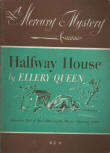 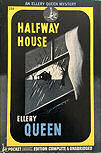   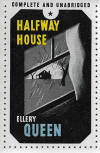       |
|
A standout character is Lucy Wilson, Gimball’s Philadelphia wife, who is
portrayed with unexpected depth and empathy. Her plight - betrayed,
impoverished, and eventually accused - is made vivid through both the
courtroom scenes and her emotional trajectory. Andrea, Gimball’s
stepdaughter from his high-society marriage, also adds complexity to the
story, as do the romantic entanglements, though some critics argue these
subplots slow the pacing. Reporter Ella Amity, a new character, brings energy and journalistic flair to the narrative, though her treatment by male characters - particularly the chauvinistic police chief DeJong - reveals the period’s entrenched sexism. Such moments are jarring, though they also serve to ground the novel in its 1930s context. Stylistically, Halfway House is more readable and less cluttered than some earlier Queen mysteries. It benefits from tighter prose, greater focus, and a scaled-down cast of characters. For those who found the dense deduction of earlier titles exhausting, this novel strikes a better balance between plot and character. The “dying clue” element - one of Queen’s narrative signatures - appears again, adding an extra layer of intrigue. The novel has drawn praise since its release. In 1936, critic William Lyon Phelps heralded it as a quantum leap ahead of the previous nine books, calling it “ripping and gripping,” free of dull passages and full of atmosphere. The Rhinebeck Gazette compared it to a modern Tale of Two Cities. Contemporary reviewers continue to appreciate its blend of classic detection with emerging narrative maturity. Still, not all elements are universally praised. Some readers feel the ending doesn’t quite live up to the promise of the setup, and the romantic subplot is seen by some as unnecessary padding. But overall, Halfway House stands as a compelling bridge between the puzzle-oriented Golden Age and the more character-driven mysteries of the later Queen period. Despite a 1937 announcement that MGM had acquired film rights, the novel was never adapted for the screen - a curious oversight, considering its dramatic setup, memorable courtroom scenes, and rich psychological and social themes. In summary, Halfway House is a criminally underrated milestone in the Ellery Queen saga. It retains the best of Queen’s early logic puzzles while exploring richer human and thematic territory. It is a story about murder, yes - but also about identity, deception, class, and transformation. A transitional novel in every sense, it is one of Ellery Queen’s most fascinating experiments - and one of his most resonant. |
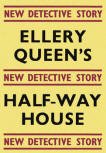 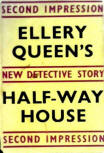  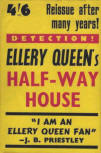 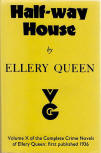  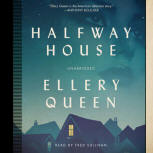 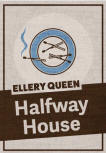 |
| The Rhinebeck Gazette,
Rhinebeck, NY, August 14. 1936 "Halfway House , where a strange man finds final rest on his tortured journey through life . . . Halfway House, where, under the grim shadow of a sensational murder, opposites meet and clash — common peddler and financier, young housewife and cold society woman, struggling lawyer and millionaire debutante . . . Halfway House , where Ellery Queen, crime consultant to the world - at large, returns to his old love of pure and pungent deduction in what is unquestionably his most fascinating narrative of real people and subtle violence- to date — a modern Tale of Two Cities by the master mystery teller." The Mercury Week-end Magazine Section September 19. 1936 - "Book Reviews Half-Way House, by Ellery Queen" by "Scribe" "I suppose everyone by this time knows the Ellery Queen mystery stories. Any one who does not can make a good start by reading "Half-Way House" and then going backwards through to rest. For I think that having read this one the reader is pretty certain to want to try the others. "Half-Way House" really begins when Bill Angel in his Pontiac coupe acting on certain instructions, halts at a lonely building outside New York, to meet his brother-in-law. And while he waits a woman's shriek startles him, followed by her appearance rushing from the building to jump into a magnificent car and drive away at furious speed. Bill then enters the house to find his brother-in-law on the floor dying from a stab in the chest. This is merely the setting for a very skillfully traced crime, the doer of which is hidden till almost the end. There are not many writers who can more success fully work up interest In the actual tracking of crime and maintain it through some 320 pages or so. It is in this direction that Mr. Ellery Queen has made his name and fame and each book that he writes comes with the same impact of skill and clever reasoning." |
|
Elements for "The Game" Halfway House is the last to contain the Queen "Challenge" which made him so distinct. (reappearing only in The Finishing Stroke.) |
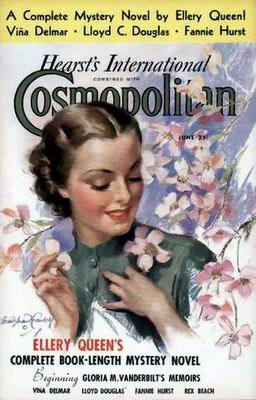 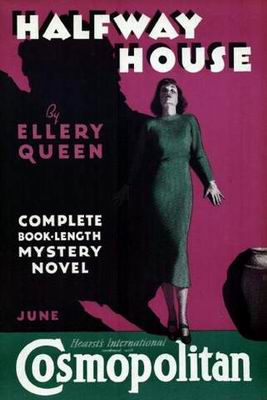 |
| Above: Cover and page in the magazine Cosmopolitan June 1936, first publication of this story. Halfway House appeared in full in 1936's June edition of (Hearst's International) Cosmopolitan. Nash's Pall Magazine also owned by Hearst had published the story in 5 parts between May and September 1936. |

|
Halfway House Translations: |
|
Other articles on this book (1) Reading Ellery Queen - Halfway House Jon Mathewson (Dec 2014) (2) #446: Spoiler Warning 8 – Halfway House (1936) by Ellery Queen JJ at The Invisible Event (Oct 13, 2018) (3) "Ellery Queen and The Mystery of the Hidden Name” Dale C. Andrews (and Kurt Sercu) (4) Halfway House - Suddenly at his Residence (Oct 12. 2018) (5) Reviews in verse Halfway House The Bunburyist by Elizabeth Foxwell (Jan. 8. 2020) |
|
*
Interested readers should know
that the icons/covers
of books, used throughout the
website have extra
descriptions/information not
included in the text on the same
page. Pointing your cursor at
the icon/cover used to reveal
this extra information. To achieve the same effect Firefox users can install an add-on called 'Popup ALT Attribute'. When installed pointing your cursor at an icon/cover results in showing you the details or additional information. |
|
Copyright © MCMXCIX-MMXXV Ellery Queen, a website on deduction. All rights reserved. |